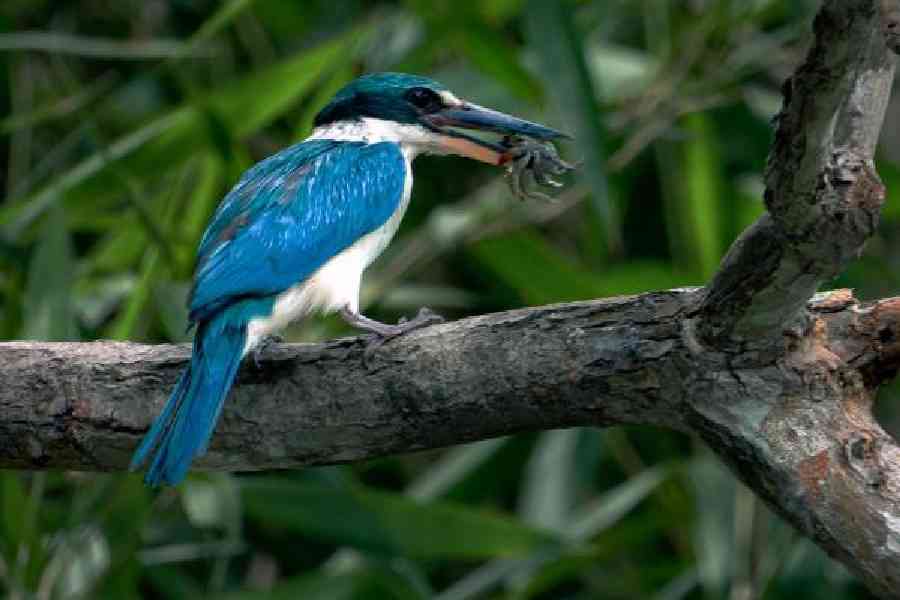A study on the breeding ecology and chick development of the collared kingfisher by scientists of the Zoological Survey of India (ZSI) has highlighted that the birds are facing survival challenges in the Indian Sunderbans because of its fragile ecosystem.
Conducted by Deblina Biswas and Kaushik Deuti of the ZSI from April to July 2023, the study highlights a deeper concern beyond the observations of bird behaviour — the continuous depletion of mangrove forests, a habitat that supports this and countless other estuarine species.
“The collared kingfisher is a specialist mangrove forager,” the authors note in their scientific paper published in Research in Ornithology or Rivista Italiana di Ornitologia from Italy. “Their survival is directly dependent on the availability of hollows in mangrove trunks and undisturbed stretches of muddy river banks, which are their feeding grounds — all of which are under increasing stress today.”
The Sunderbans, the world’s largest contiguous mangrove forest, spanning both India and Bangladesh, not only houses nine species of kingfishers, saltwater crocodiles and royal Bengal tigers, but also acts as a buffer against cyclones and coastal erosion. But, according to multiple studies, this natural barrier is under threat now. Research indicates this region has been experiencing a decline in mangrove cover because of many reasons, including global warming, rising sea levels, recurrent cyclonic activity and human encroachment.
In 2020, Cyclone Amphan uprooted vast swathes of mangrove trees, leaving behind saline scars on both land and freshwater ponds. Every cyclone comes flooding saltwater into farms and villages as the depleted mangrove cover fails to resist the wind and storm.
The recent collared kingfisher study is seen as the most intimate look at the effects of such disturbance in this fragile ecosystem. The scientists "tracked one nest on Gosaba island for 33 days, observing chick development from four eggs in eight stages — from blind, pink hatchlings to fully-feathered fledglings". Their observations prove how sensitive and interlinked their life cycle is to the mangrove ecosystem around it.
“Both the parent kingfishers fed their developing chicks on small mangrove mud-crabs seven out of 10 times, intermixing them with mudskippers and molluscs both during low and high tides. All these organisms are integral to the mangrove environment. Only during heavy rain or unusually high tides, the parents couldn’t find their usual food and were forced to fly across farms to find mole crickets and dragonflies,” said Biswas.
The kingfisher’s plight is not an isolated case here. “The bird is not just a species — it’s a bioindicator,” said Deuti.
Their research data shows that chicks were fed more in the mornings than in the evenings. This indicates a critical reliance on early-day access to prey such as crabs, mudskippers and molluscs from nearby mudflats. Experts say this feeding pattern could easily be disrupted by tidal changes, riverbank erosion or mangrove loss.
The paper compares findings with other studies from Bangladesh, the UAE and Fiji. The comparison shows that while clutch sizes and incubation periods remain similar across regions, the Sunderbans offer a richer mosaic of food diversity — provided the mangroves stay intact.
The researchers urge for long-term ecological monitoring and conservation efforts supported by ground-level field studies.
"While satellite imagery can show forest loss, it is only by peering into the nest hole of a kingfisher that we begin to grasp the deeper, interconnected crisis of biodiversity loss related to human interference and climate change," said Deuti. “It’s not just about a bird in a tree hollow. It’s about a tree holding up a nest in a forest that holds up an entire coastline. When the inhabitants of that nest are in danger, the coast trembles too.”










